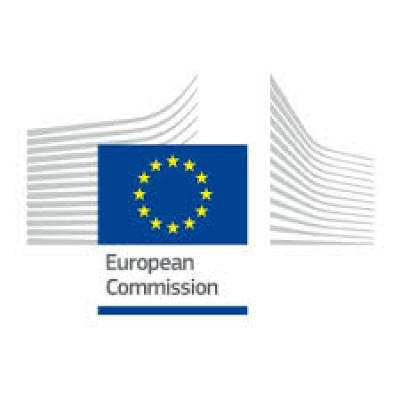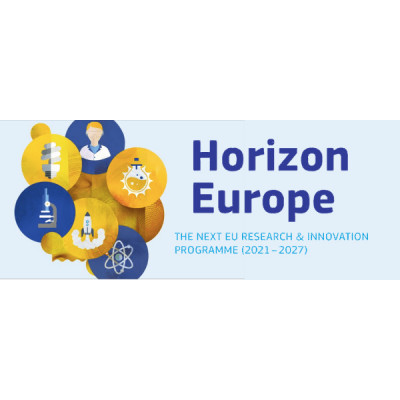
Single European Sky Interoperability
Details
Description
Call Updates
Sep 13, 2022 5:16:09 PM
New versions of detailed budget table for EDF RA.
Correction of formulas for participation of SMEs and mid-caps in the sheet Info Award criterion 5 (see tab "history of changes" in the file for more details).
Jun 21, 2022 3:52:14 PM
The submission session is now available for: EDF-2022-RA-C4ISR-AIRC2(EDF-RA)
Jun 10, 2022 3:24:36 PM
Hyperlinks to documents in Topic conditions and documents have been updated.
Single European Sky interoperability
TOPIC ID: EDF-2022-RA-C4ISR-AIRC2
Programme: European Defence Fund
Work programme part: EDF-2022
Call: Research actions through actual costs grants following the call for proposals (EDF-2022-RA)
Work programme year: EDF-2022
Type of action: EDF-RA EDF Research Actions
Type of MGA: EDF Action Grant Budget-Based [EDF-AG]
Deadline model: single-stage
Planned opening date: 21 June 2022
Deadline date: 24 November 2022 17:00:00 Brussels time
General objective
In order to cope with sustained air traffic growth and operations over Europe, the Single European Sky (SES) initiative has been running since 2004. It intends to improve the performance of Air Traffic Management (ATM) in terms of safety, capacity, cost-efficiency and the environment. It hence paves the way for a European airspace that is used optimally, embraces emerging disruptive technologies, facilitates the integration of “new entrants” such as all types of drones, High Altitude Platform Systems (HAPS) to super- and hyper-sonic aircraft, trans-atmospheric and suborbital vehicles, and complies with emerging challenges. This modernisation of the civil aviation sector does not directly apply to military operations and training. However, civil and military aviation activities are closely interlinked, as they share the same airspace considered as a continuum. Therefore, SES implies a necessary coordinated modernisation of the different Air Command and Control (C2) systems, which are furthermore to collaborate at national and EU levels. Indeed, in this context, concomitant with a more hostile security environment, the timely sharing of correct and consistent information covering all phases of flight, between civil and military parties is a must.
Specific objective
The evolving SES regulations based on the harmonisation of the coordination and interoperability operational concepts or technical standards introduces in front of the military ATM stakeholder several new challenges which might be converted in opportunities for a more complete, optimized and performant Air C2 missions.
The introduction of the 4D Trajectory based management of the Air traffic and the new technical standards on the harmonisation of automatic ATM data exchanges need to be implemented in the Air C2 centres and systems.
The latest version of the European ATM Master Plan demonstrates the necessity to transform the ATM architecture due to several observed concerns that will have to be improved and optimised. These concerns are mainly the following ones:
- a steady increase of conventional traffic since 2014, even if the current sanitary crisis has drastically reduced the traffic, it is most probably a temporary situation;
- the growing environmental concerns raised by the aviation sector to demonstrate its capacity to contribute to the EU’s environmental objectives;
- the appearance of new entrants into the airspace with the expected large number and heterogeneous nature of drones together with the emerging interest for operating vehicles at very high altitudes;
Against this background, Member States and Norway must be prepared from a military perspective to:
- Safeguard the military ambition to be trained for and to execute missions as required and more specifically to continue performing Air Surveillance and Control in the changing context of civil aviation sector (digitalization, automation, dynamic airspace management, new data format, resilience and cybersecurity issues), facing the density and diversity increase of air traffic,
- Ensure the interoperability and data exchange between civil and military control centres, including data sharing between classified and non-classified environment, permitting an efficient, secured and safe ATC [1] (e.g., for military airports providing Air Traffic Services for civilian flights) and to support the planning, tasking and execution of air operations 24/7.
Scope and types of activities
Scope
Military airspace users’ main challenges are to continue to provide, and further improve, defence and security missions, with needs of high degree of flexibility and reactiveness, into an airspace shared with civil airspace users, without prejudice to the safety of civil air traffic, and considering, to the maximum extent possible, the performance and environmental objectives of the civil aviation sector.
In order to do so, the scope of the activity consists in increasing interoperability of military Air C2 systems against SES rules via an interoperability demonstration. The activity must focus on identifying technical solutions for information and data exchanges between cross border military C2 systems and cooperating civil – military ATC systems based on new challenges generated by the evolution of the SES harmonisation deployment regulation and new possibilities offered by information technologies.
In particular, the implementation and assessment of new rules of Interoperability (IOP) for surveillance and control of the European air traffic from a military perspective are the main objectives of this call. Several technical standards must be implemented, and solutions developed to ensure the harmonized, efficient and secure data exchanges between relevant civil and military stakeholders:
- Technical interoperability for real time flight and airspace management data exchanges (with relation to ability to exchange, exploit and fill Flight Objects, etc.);
- Security aspects to ensure cross-domain exchanges (with regards to secure gateway or procedures to limit dissemination of sensitive military information, facilitating sharing of military information to enhance civil situational awareness, etc.);
- Assessment of resulting ATM safety levels as any ATC civil-military interoperability system.
Types of activities
The following types of activities are eligible for this topic:
|
Types of activities (art 10(3) EDF Regulation) |
Eligible? |
|
|
(a) |
Activities that aim to create, underpin and improve knowledge, products and technologies, including disruptive technologies, which can achieve significant effects in the area of defence (generating knowledge) |
Yes (optional) |
|
(b) |
Activities that aim to increase interoperability and resilience, including secured production and exchange of data, to master critical defence technologies, to strengthen the security of supply or to enable the effective exploitation of results for defence products and technologies (integrating knowledge) |
Yes (optional) |
|
(c) |
Studies, such as feasibility studies to explore the feasibility of new or upgraded products, technologies, processes, services and solutions |
Yes (mandatory) |
|
(d) |
Design of a defence product, tangible or intangible component or technology as well as the definition of the technical specifications on which such design has been developed, including partial tests for risk reduction in an industrial or representative environment |
Yes (mandatory) |
|
(e) |
System prototyping of a defence product, tangible or intangible component or technology |
No |
|
(f) |
Testing of a defence product, tangible or intangible component or technology |
No |
|
(g) |
Qualification of a defence product, tangible or intangible component or technology |
No |
|
(h) |
Certification of a defence product, tangible or intangible component or technology |
No |
|
(i) |
Development of technologies or assets increasing efficiency across the life cycle of defence products and technologies |
No |
The proposals must substantiate synergies and complementarity with SES, including SESAR, activities.
Functional requirements
The technical solutions for information and data exchanges between cross border military C2 systems and cooperating civil – military ATC systems should meet the following functional requirements:
1) Situational Awareness establishment and exploitation
- Improve surveillance and flight identification data capacity;
- Improve situational awareness and operational flexibility;
- Identify better conditions to accommodate the mission-specific requirements derived from the introduction of new generations of military manned and unmanned aircraft and systems.
2) Coordination and IOP assessment
- Improve flight information automatic exchange for coordination purposes;
- Facilitate hand-over of aircraft control;
- Identify and develop a military solution of common interest for European forces and compliant with SES regulation for the ATM civil-military, and military-military exchanges;
- Integrate data compliant with SES technical standards used for IOP exchange between civil-military ATC systems or military Air C2 systems of cross-border countries;
- Implement Operational Air Traffic (OAT)/General Air Traffic (GAT) rules.
3) Cross-domain connectivity establishment and services provision
- Assess the impact of the new pan-European network service (NewPENS) and the system-wide information management (SWIM) service-oriented architecture, including SWIM Nodes (for military operation system) access procedure, based on available standard interfaces to the military infrastructure and services delivery architecture (SWIM Blue for the interoperability);
- Identify the level of performance/quality of service requirements as the basis to select the applicable SWIM-TI (technical infrastructure) profile;
- Develop interfacing and IP (internet protocol) networking approaches supporting SWIM-TI accessibility;
- Comply with NewPENS and SWIM services, including related standardization rules;
- Identify proprietary/local interoperability options outside the context of SWIM to ensure service continuity and redundancy and diversity of connections for military systems;
- Design and develop an evolving, scalable cross-domain solution supporting the information exchanges between ATM civil-military and military-military centres;
- Validate end-to-end information exchanges via the SWIM TI, between ATM military centres from European forces and between ATM civil and military centres in accordance with the regulation of the SES and national security rules.
This collective work should provide individual and mutual benefits, for European Member States, Norway and the industry, in different fields as follows:
- European Technology
- Reinforcement and security improvement of data exchange between cross domain (classified and unclassified environments);
- Improvement of air surveillance performances and flight’s safety;
- Improvement of Dynamic Airspace Management;
- Capitalisation of on field proven Research & Development (R&D) process and ensure limited in time project;
- Production of consolidated R&D data for further industrialization phase.
- European Autonomy
- Contribution to the enhancement of sensible data sharing between ATM stakeholders;
- Maintenance and enhancement of autonomous control of the European defence capabilities;
- Protection of the environment of the European citizen.
- European Security
- Participation to the improvement of the airspace surveillance and control, and air policing missions;
- Facilitation of military forces projection and intervention;
- Enhancement of cooperation between Member States and Norway for defence matters.
[1]Air traffic control



